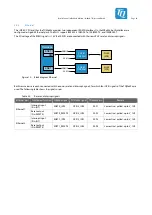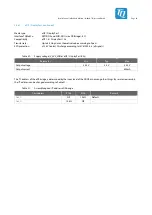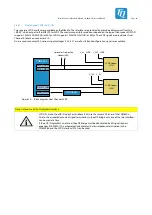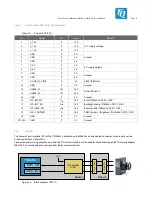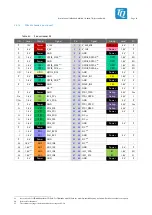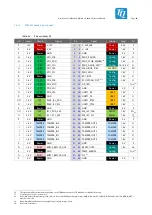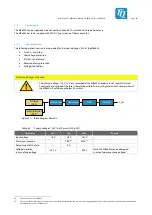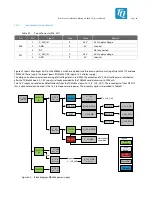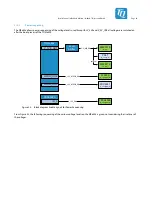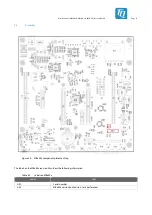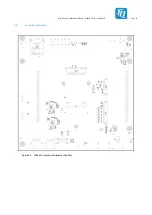
User's Manual l MBa8Xx UM 0100 l © 2020, TQ-Systems GmbH
Page 37
3.8.11
USB 2.0 OTG
USB OTG1 is connected as USB 2.0 OTG to a separate Micro AB USB socket and can be used for the serial downloader.
The maximum output current of USB OTG1 is 500 mA. The USB 2.0 OTG port of the TQMa8Xx provides a theoretical data rate of
480 Mbps. Depending on the software and hardware used, the effective read and write rates of the ports may vary.
TQMa8Xx
USB 2.0 OTG
(X29)
USB
Switch
MIC2026
V_5V_USB
V_VBUS_OTG1
OTG1_VBUS
USB_OTG1_D
–
USB_OTG1_ID
USB_OTG1_PWR
USB_OTG1_OC#
Figure 18: Block diagram USB OTG
3.8.12
SD card
The SD card connector is directly connected to the SDHC controller of the TQMa8Xx via a 4-bit wide data interface.
The SDHC controller in the TQMa8Xx basically supports UHS-I SD cards in transfer mode SDR104 according to the SD card
standard 3.0. This allows transfer rates of up to 104 Mbyte/s.
The SD card is permanently supplied with 3.3 V, the pull-ups are also connected to this voltage.
Signals SW1_WP and SD1_CD# have a fixed I/O voltage of 1.8 V. Their 10 kΩ pull-ups are connected to 1.8 V.
It is possible to boot from SD card, see chapter 3.2. All data lines are provided with ESD protection.
TQMa8Xx
SD card
Slot (X17)
SD1_CLK
SD1_CMD
SD1_DATA[3:0]
SD1_WP
SD1_CD#
Figure 19: Block diagram SD card
Note: SD card initialisation after reset
During a system reset, the host reinitializes the SD card, but the SD card remains in the SDR104
transfer mode and thus also at an I/O voltage of 1.8 V since the supply voltage of the SD card is not
power-cycled after a system reset on the MBa8Xx revision 02xx. This will be corrected on the MBa8Xx
revision 03xx. Because of this behaviour, the host cannot reinitialize the SD card in SDR104 mode at
boot time and communication problems may occur. To avoid this, a power cycle must be performed
e.g. by pushing Power Button S5.


